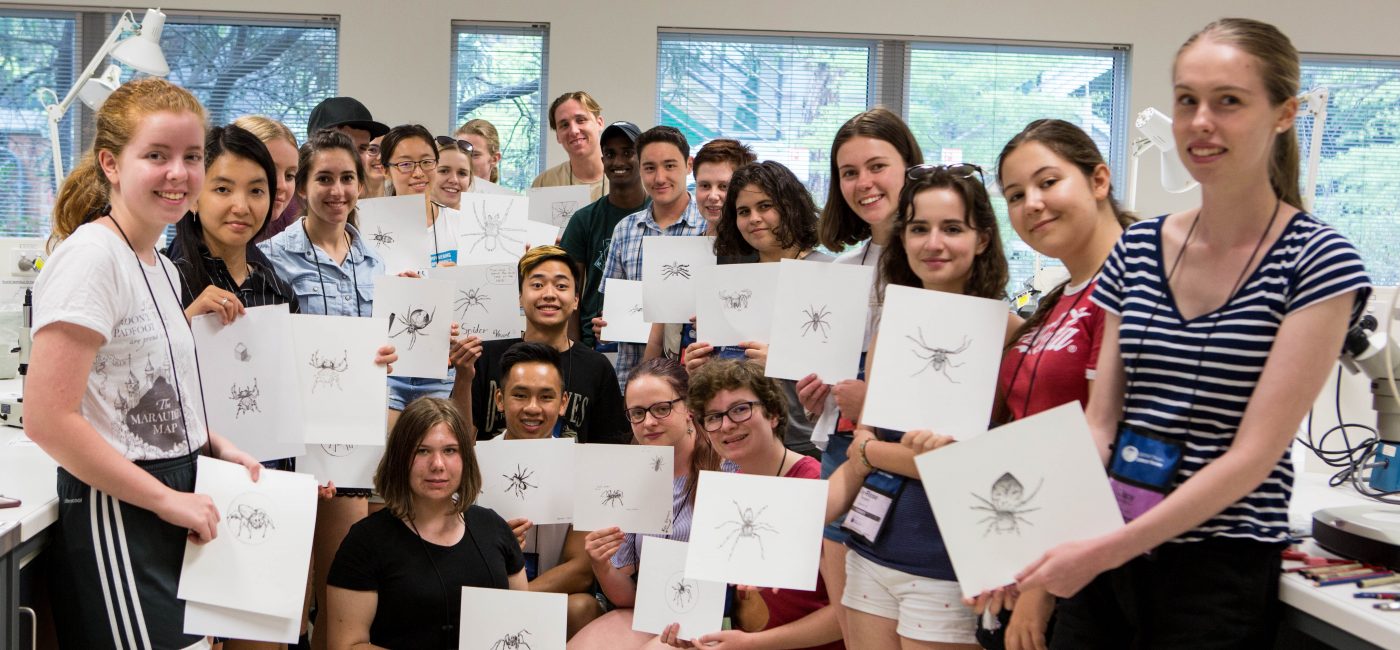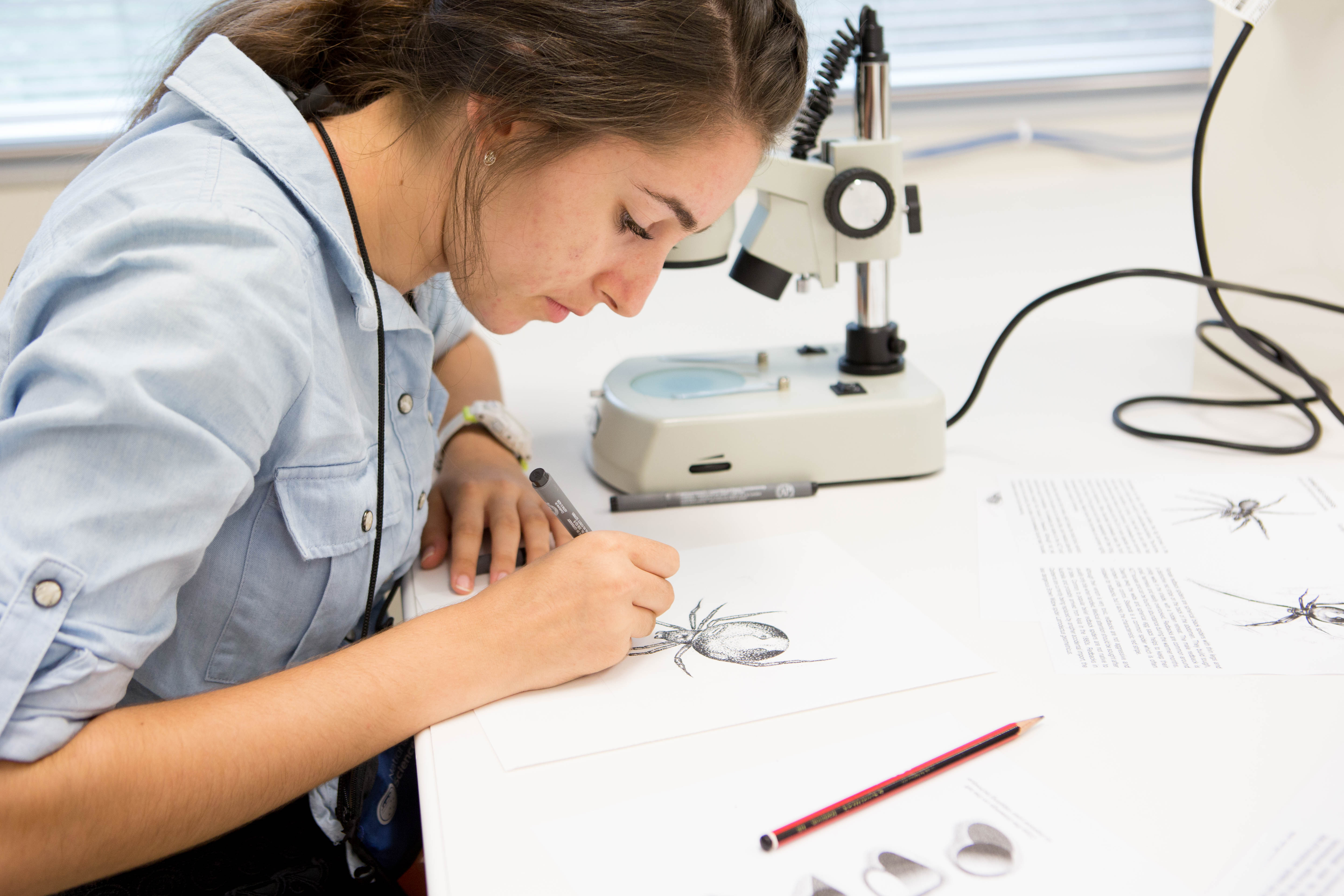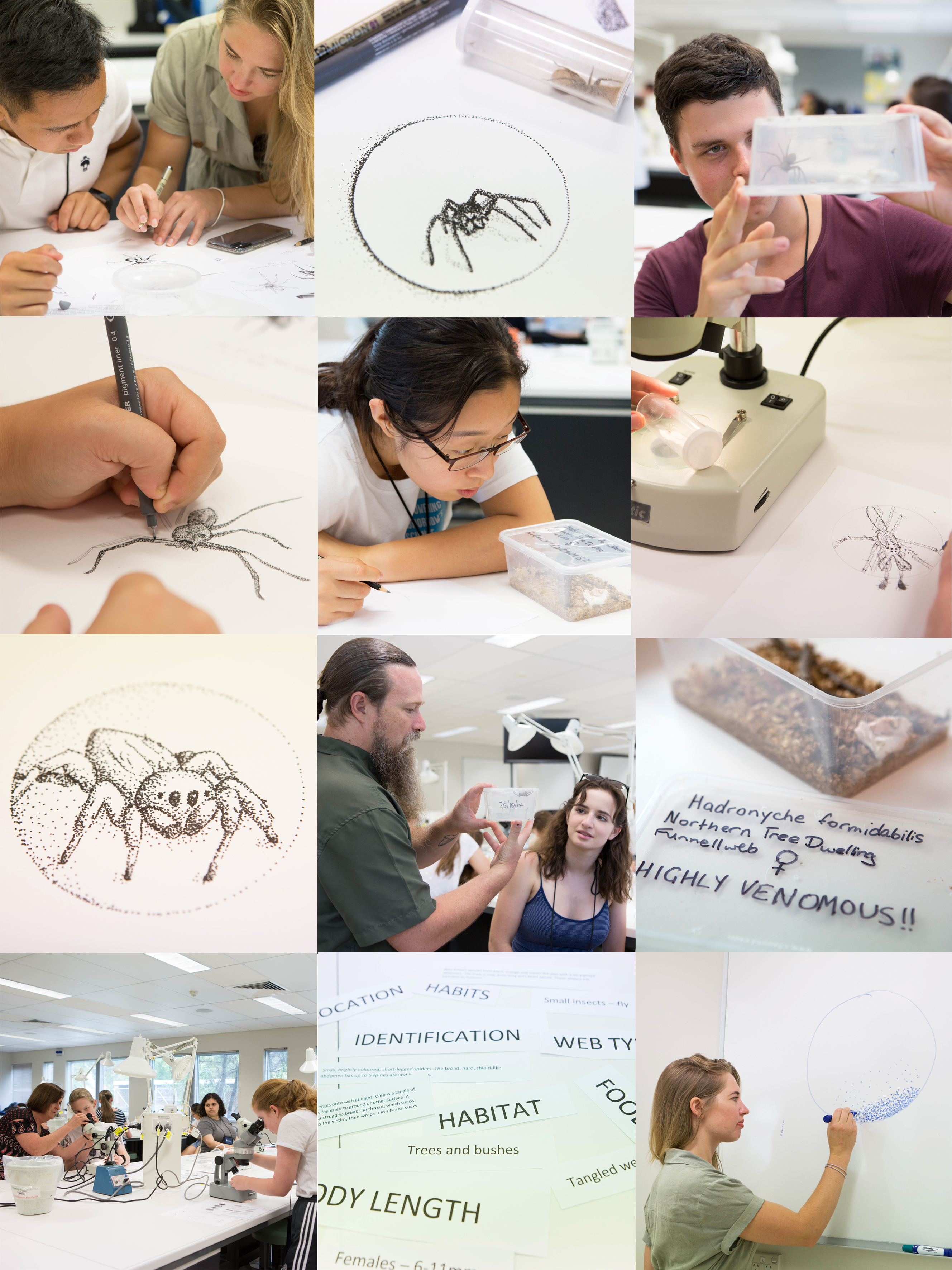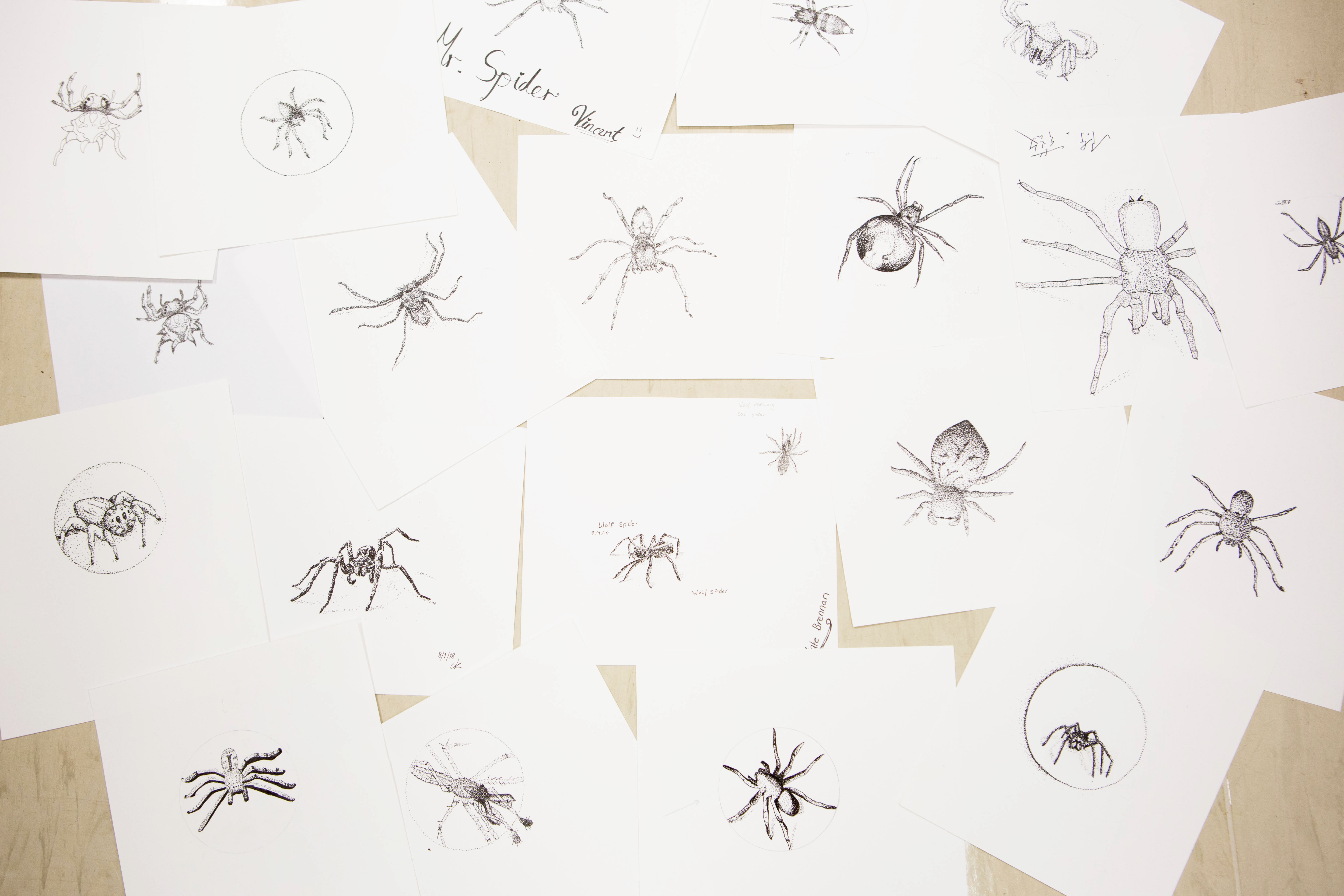
"Observational drawing is an extremely important learning tool. Students learn to see details, understand structure and context, and then can easily apply these skills in a response to any subject – whether it is learning about spiders, other animals, plants, or any indeed, any subject."
Q. What has eight legs and is made up of dots?
A. A stippled drawing of a spider!
Most of us have looked through a microscope during a science class at school but have you ever looked at something under a microscope with the intention of drawing it?

One of the newest modules of the National Youth Science Forum’s (NYSF) Year 12 Program is STEM+. As jobs become increasingly interdisciplinary, NYSF aims to show students they can use their skills and passions across a range of disciplines in their future careers. A series of presentations and workshops were run during the January, ranging from STEM+ Policy, to Indigenous STEM, to STEM+ Fashion, and STEM+ Green Microfactories to name a few.
In STEM+ NatureArt Lab participants were able to get up close and personal with spiders, viewing live specimens - in containers - under a microscope to learn more about their anatomy, structure, ecology and venom before drawing them. Some of the spiders viewed by students included the Funnel Web, Red Back, Grey Wolf, Jewel and Huntsman. Students then learned stippling techniques to create their artistic impression of the spider.
NatureArt Lab founding director Julia Landford said the workshop provided students with a unique opportunity to bring together art and their love of science.
“I was so impressed with the student’s response to the spider workshop. Most of the students had never had the opportunity to learn about spiders, and none of the students had drawn spiders using stippling techniques,” she said.
“Observational drawing is an extremely important learning tool. Students learn to see details, understand structure and context, and then can easily apply these skills in a response to any subject – whether it is learning about spiders, other animals, plants, or any indeed, any subject. The physical process of using the eye, hand and brain to draw something, helps to establish memory pathways and learning. The enquiry-based research, problem-solving and creative drawing processes involved are parallel to scientific enquiry and are a great adjunct for developing capabilities with STEM students.”
“Students created incredible drawings of spiders! Each student brought their own perspective and personality to the exercise, and created a diverse range of scientifically accurate and artistic drawings beautifully arranged using ink on paper.”

NYSF 2018 participant, Lucy from Wagga Wagga in New South Wales attended the Stem+ NatureArt Lab visit.
“I thoroughly enjoyed the experience, which involved creating drawings using the stippling technique with live spiders, including the Funnel Web, Red Back, Wolf, Jumping and many more as models,” Lucy said.
“We were guided in this process by exceptional members of staff, who readily shared their expertise. The activity demonstrated how STEM and so many other disciplines interrelate, while engaging our creative sides which was a lot of fun.”
Thank you to NatureArt Lab’s Julia Landford and Clare Jackson who tutored the students and Skott Williamson from Reptiles Inc. for providing the fabulous spider specimens.
The student participants reported that it was an informative and inspirational workshop and they produced fantastic works of art. Not only do we have our scientists of the future here at NYSF but a group of budding young artists!
